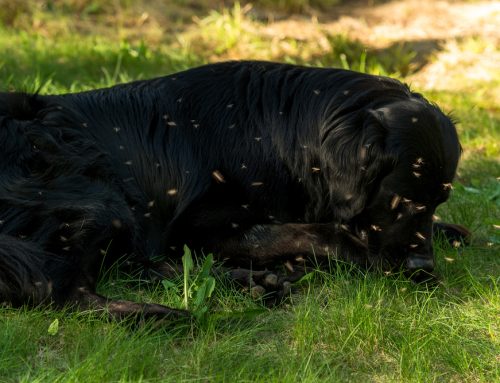You may think that animals are supposed to have “doggy breath,” but this is definitely not true. While minty fresh may not be a realistic expectation, your pet’s bad breath should not prevent you from wanting to cuddle and play with her. If your four-legged friend’s breath has become foul, here is what you need to know.
Bad breath is caused by dental disease
If you don’t brush your pet’s teeth on a regular basis and have professional veterinary dental cleanings performed every year, chances are your pet has dental disease. According to the American Veterinary Medical Association (AVMA), dental disease is the most common clinical condition to affect pet dogs and cats. Fortunately, this disease is completely preventable with regular oral care. The problem: Many pet owners don’t know that they should be taking care of their pet’s mouth and aren’t familiar with the signs of dental disease.
What is happening in my pet’s mouth?
Dental disease—or, more accurately, periodontal disease—is caused by bacteria that inhabit the mouths of all dogs and cats. These bacteria are responsible for the formation of plaque and tartar on the tooth’s surface. Tartar may be unsightly, but it is not the culprit of periodontal disease. Bacteria also weasel their way between the tooth root and surrounding gum tissue (gingiva), causing the early stages of dental disease. As gingival inflammation progresses, the bacteria eventually work themselves further down the tooth root until they begin to break down the periodontal ligament that anchors the tooth into its bony socket. If immediate action is not taken in the early stages of this harmful process, inflammation and disease will continue until the tooth becomes loose. It is the inflammation, and possibly even infection caused by oral bacteria, that is the source of the stink coming from your pet’s mouth.
Signs of dental disease in pets
How do you know if your pet has dental disease? Most pets will have the beginning stages of periodontal disease by three years of age if regular preventive care is not taken. If tooth brushing and dental cleanings are not part of your routine, you can assume that your furry friend falls into this category. The best thing to do is have our veterinary health care team thoroughly examine your pet’s mouth twice a year for signs of periodontal disease. Here are signs you can watch for at home:
- Bad breath (halitosis)
- Excessive drooling
- Pawing at the mouth
- Accumulation of tartar (a yellow or brown hard material) on the tooth surface
- Red or bleeding gums
- Loose teeth
- Behavior changes because of chronic pain
- Decreased appetite or difficulty eating
If you’ve noticed stinky breath, it’s likely that your pet has dental disease. A visit to our hospital will tell you how it should be treated.

Treatment of dental disease in pets
Once halitosis, plaque, and periodontal disease are present, the only treatment is a professional dental cleaning performed by a veterinarian. Since the real problem lies under the gum line, cleanings must be performed under anesthesia to remove subgingival bacteria and plaque. Although this may sound scary, the safest anesthetic drugs and monitoring techniques are used to take care of your furry friend. Once your pet is asleep, dental X-rays are obtained so we can identify diseased teeth and plaque is scaled off the tooth crown and below the gum line. A final polish will make her pearly whites glisten, and she should be ready to go home with you a few hours later.
Prevention of dental disease in pets
Dental disease is easier to prevent than treat! Daily tooth brushing is the most reliable way to prevent the formation of plaque—both above and below the gum line. But, brushing will not get rid of plaque and tartar that has already formed. If your pet is less than a year old, start today. If she is older than one year, ask our team whether a dental cleaning should be performed first to remove plaque already starting to build up.
Brushing your pet’s teeth may seem odd, but most pets adapt to this new routine quite well—especially if you use the variety of flavored toothpastes available. Check out these simple brushing instructions from the AVMA that any pet owner can master.
Other tips for preventing dental disease and the formation of tartar:
- Feed hard food—it will scrape along the tooth’s surface as your pet chews it.
- Use chew toys that have ridges and bumps, which are designed to wear plaque off of the tooth surface before it mineralizes into solid deposits.
- Feed dental chews or treats to discourage plaque formation. Find safe products approved by the Veterinary Oral Health Council (VOHC).
- Provide rope toys your pet can chew on—the fibers will work themselves against and in between teeth to keep them clean.
- Take your pet for twice-yearly dental check-ups, and schedule dental cleanings when recommended.
Don’t hesitate—contact us today with questions about your pet’s bad breath and dental health.








Leave A Comment